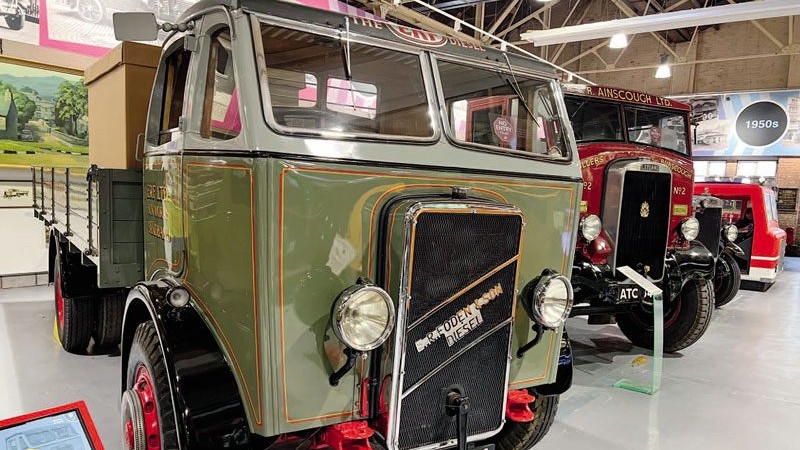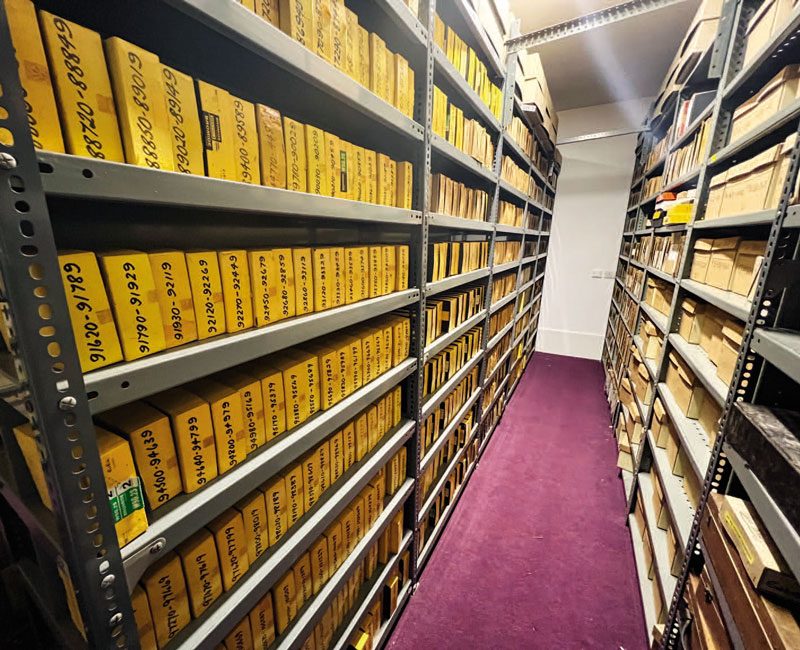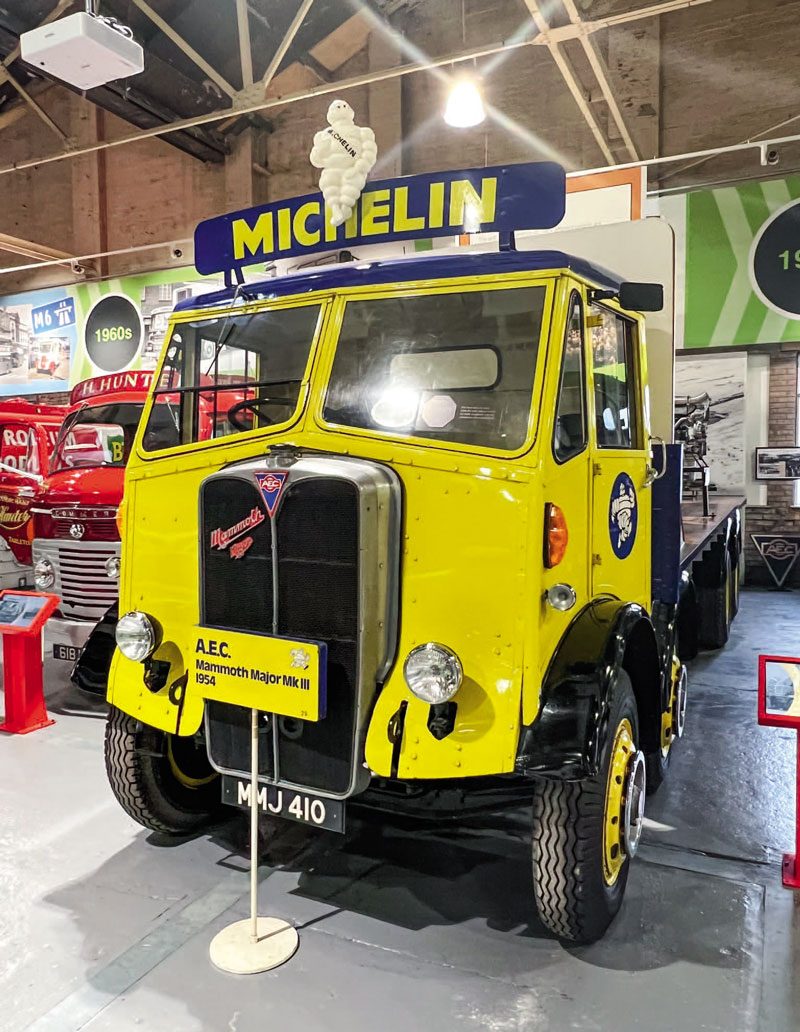Celebrating the best of Britain

It’s a break from the norm this month as Will Shiers takes a trip down memory lane, visiting Leyland’s British Commercial Vehicle Museum.
Leyland, Lancashire, in the northwest of England, is undoubtedly the spiritual home of British truck manufacturing. Lorries started rolling out of here in 1896 and today, PACCAR’s Leyland Trucks factory still assembles a full range of DAF trucks. So it’s fitting the town should be home to the British Commercial Vehicle Museum. However, just like the UK truck manufacturing industry, which is a shadow of its former self, this excellent museum came close to disappearing altogether. In fact, thanks to Covid-19, it’s not out of the woods yet.
I’ll be honest, when I first visited this place a decade ago, I wasn’t overly impressed. While I couldn’t fault the quality and variety of the exhibits, a leaking roof and a lack of heating didn’t exactly enhance the visitor experience.
And it was with these memories in my head (and four layers of clothes on my body) that I went back to Leyland earlier this year on a wet winter’s morning.
As I entered the building and was greeted by director Keith Moyes, it was immediately apparent that the museum had undergone a massive transformation. For starters, it was bright and warm, and the sound of rainwater dripping into strategically placed buckets had been replaced with the sounds of children ringing fire engine bells and generally enjoying themselves. Previously, kids would have been dragged around here as a punishment, whereas now there is plenty to keep them occupied. So how did this welcome transformation come about?
“We got to the point where we realised there were two ways to go,” explains Moyes. “We either needed to wrap it up and go home or go and get some funding and bring it up to date.” So, in 2016, the museum applied for Heritage Lottery Funding. It was successful and was approved for £1.8 million ($3.5 million). The museum closed its doors at the end of 2017, and the building work began.
Gutting a building’s interior is challenging at the best of times, and it’s made even more complicated when it’s packed full of valuable classic lorries, buses and vans. While some were temporarily returned to their owners, those belonging to the museum had to remain on site. In an exercise that must have resembled a massive game of Tetris, they were moved around the building work.
“Everything was sheeted and covered, and when the contractors did one side of the building, we moved everything to the other side,” recalls Moyes. While most of the combustion-engined vehicles will start and run (albeit with the building’s smoke alarm turned off first), the steam tractors had to be manoeuvred using air-operated vehicle movers.
The museum’s main exhibition hall got a new roof, lighting and heating systems and was completely redesigned. A pair of large conference suites were added as well as a purpose-built temperature- controlled archive department.
In 2018, complete with a new logo and branding, the British Commercial Vehicle Museum reopened its doors. It was an immediate success, with footfall doubling. And with the ability to lay on private functions, conferences, beer festivals and other entertainment, the museum’s finances began to improve. Things were looking very good indeed – and then the pandemic hit.
“We made the difficult decision to close the café and make 10 people redundant,” says a downbeat Moyes, which leaves just four salaried staff who are supported by 35 volunteers. “The footfall just went through the floor throughout the pandemic, and we have been bleeding cash. It costs us £2800 a month just in heat and light. We are a charity, but we’re also a business, so we need to make money.”
After the relaunch, the museum welcomed more than 22,000 guests per annum, but last year this dropped to 8000.
“It has been a bleak picture, but I’m hopeful things will pick up in the spring,” he says. “We have to look forwards and get ourselves back to where we were two and a half years ago.”

ARCHIVE SERVICE
As good as the museum is, I do appreciate that not too many of you are likely to make the 18,000km journey to visit. However, one service it offers that you might like to access is its extensive archive department. The museum has a handwritten build sheet and parts listing for every Leyland Group truck going back to the turn of the last century. In fact, it was only when PACCAR took over and started computerising things that the supply dried up. So, if you have a vintage vehicle that you’re rebuilding and want a copy of the build sheet, they’re the only people who can supply it. There is currently a £100 ($195) charge for this service which, considering the amount of work required by the team of volunteers manning the archives, is incredibly good value for money.
“We get enquiries from all over the world,” says archivist Gordon Whitaker. “In fact, I recently did some research for an Australian gentleman who had a pair of Scammell Crusaders.”
Additionally, the archive houses many volumes of bus and truck magazines, tens of thousands of photographs and negatives (which it is in the process of digitising), and a Leyland film library that goes back to the 1930s.
“The archive is an area that we haven’t properly exploited yet,” reckons Moyes. “We need to make people more aware of what we have here, and of what services we can offer.”

Read more
Winter warriors
0 Comments12 Minutes
From our travels
0 Comments1 Minute
Maximum nostalgia
0 Comments5 Minutes
Meeting Volvo’s VNL
0 Comments13 Minutes














